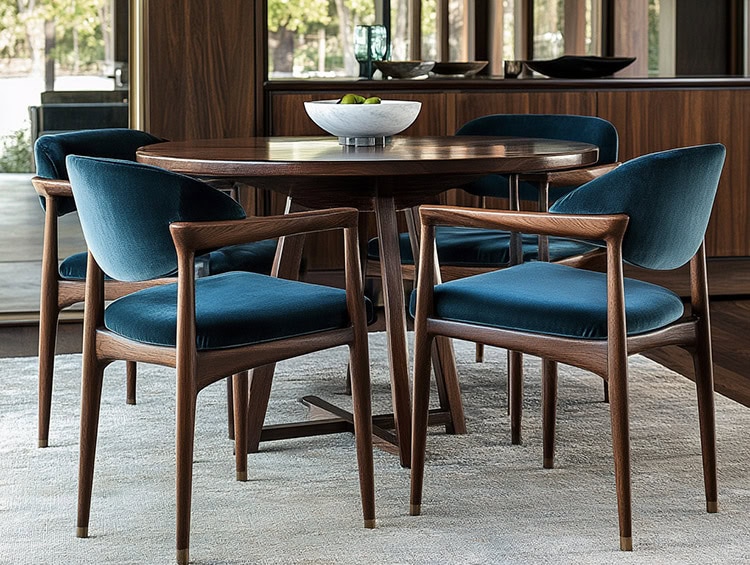It’s rare, but every so often, a new design style emerges— like organic modernism. But what is this style and how new is it really? Let’s take a deeper look into what this style is all about and how you can achieve the look in your home.

What Is Organic Modernism?
Although the term “organic modernism” (sometimes referred to as organic modern) is fairly new, the concept certainly isn’t. The concept itself can actually be traced back to architect Frank Lloyd Wright, who designed more than 1,000 structures over a creative period of 70 years.
Wright believed a great design should feel as though it’s part of the landscape. A philosophy, he called organic architecture.
And that’s exactly what organic modernism is— a design style that’s essentially a balanced mix of modern lines contrasted with natural forms and materials. When done right, the result is a style that’s sleek while remaining incredibly warm and approachable.
Achieving the Look In Your Home
Although organic modernism typically uses the same iconic mid-century pieces, it is also known to borrow from Scandinavian (think hygge) and bohemian style. Regardless of what’s at the core, the style has a heavy emphasis on bringing the natural world inside through organic materials, colors, shapes, and textures.
Organic modern interiors are often clean and uncluttered, with a subdued color palette. Colors are typically shades of white, gray, or beige with very few vibrant colors. If brighter tones are used, it’s usually done in a small way, such as on a pillow or on a rug.
That doesn’t mean other, muted colors can’t be used. In fact, that’s what so great about this style: its ability to morph into what you prefer! Colors such as a cool navy blue or a sophisticated olive green can really make a statement especially when paired with organic elements.
Speaking of those organic elements…
Natural materials to consider could include:
- wood
- natural stone
- bamboo
- stained elm
- woven cattail
- seagrass
- limestone
- sheepskin
- cowhide
- wool
- sisal
And of course, live plants.
When choosing these natural elements, the more sustainable the better. For example, wood is good, but reclaimed wood is better. Other sustainable materials include fibers like cotton and linen and textiles like recycled glass and metal.
It’s also a major win if you are able to blend handcrafted materials inspired by nature into your home. Not only do you help out an artisan, but you also end up with a piece that’s one-of-a-kind.
A More Flexible Style Than You Might Realize
Keep in mind that even though it’s called organic modernism, the look is by no means limited to modern or contemporary homes. With the right selection of furnishings, colors, and materials, you can add touches of modern elements to both traditional and transitional homes.
So, now that you know more about organic modernism, do you love it? If so, be sure to stop by the showroom to browse our selection of discount designer fabrics as well as our growing selection of accessories. There’s sure to be plenty to incorporate into your gorgeous organic modern home!
















